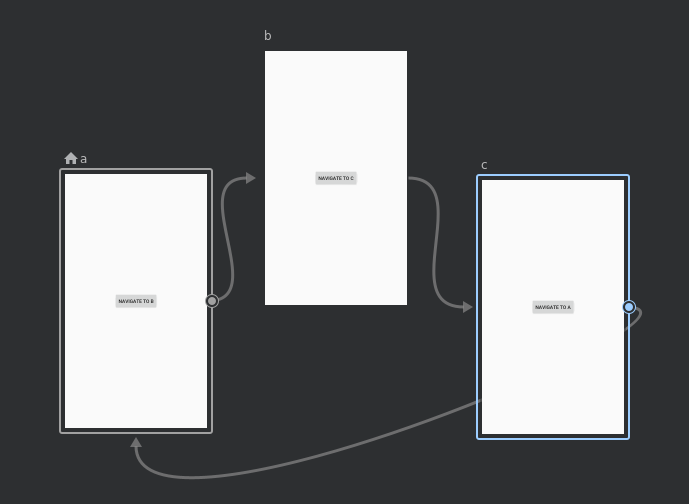I'm new to the Android Jetpack Navigation architecture. I'm trying it out on a new app. There's one activity and a few fragments, two of them are login screen and email login screen. I defined those fragments in my navigations XML. The flow of the app is as follows:
Login screen → Email Login screen
What I want is, after navigating to the email login screen, when I press back, the app exits. Meaning the back-stack for login screen is removed. I know login screens aren't supposed to work that way, but I'm still just figuring things out.
I followed the documentation from Google's Get started with the Navigation component. It said, using app:popUpTo and app:popUpToInclusive="true" is supposed to clear the backstack, yet when I press back on email login screen, it still goes back to login instead of exiting.
So, here's what I've tried.
nav_main.xml
<fragment android:id="@+id/loginFragment"
android:name="com.example.myapp.ui.main.LoginFragment"
android:label="@string/login"
tools:layout="@layout/fragment_login" >
<action
android:id="@+id/action_login_to_emailLoginFragment"
app:destination="@id/emailLoginFragment"
app:popEnterAnim="@anim/slide_in_right"
app:popExitAnim="@anim/slide_out_right"
app:popUpTo="@+id/emailLoginFragment"
app:popUpToInclusive="true"/>
</fragment>
<fragment android:id="@+id/emailLoginFragment"
android:name="com.example.myapp.ui.main.EmailLoginFragment"
android:label="EmailLoginFragment"
tools:layout="@layout/fragment_login_email" />
LoginFragment.kt
override fun onCreateView(
inflater: LayoutInflater, container: ViewGroup?,
savedInstanceState: Bundle?
): View {
binding.emailLoginButton.setOnClickListener {
findNavController().navigate(R.id.action_login_to_emailLoginFragment)
}
return binding.root
}
I gave a click event to a button. In it, I used the Navigation Controller to navigate to the email login screen by giving it the action's ID. In the <action>, there are app:popUpTo and app:popUpToInclusive="true".
After reading the documentation over and over, as well as reading plenty of StackOverflow questions, I found those properties are supposed to remove my login screen off the back-stack. But they don't. The button does navigate to the email login screen, but when I press back, it still goes back to login screen instead of exiting the app. What am I missing?

